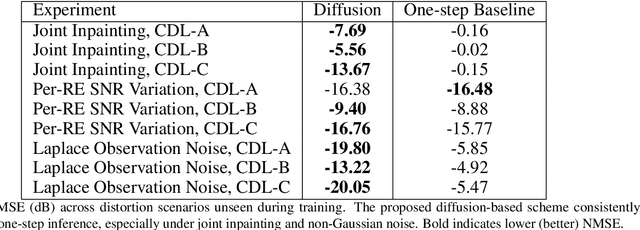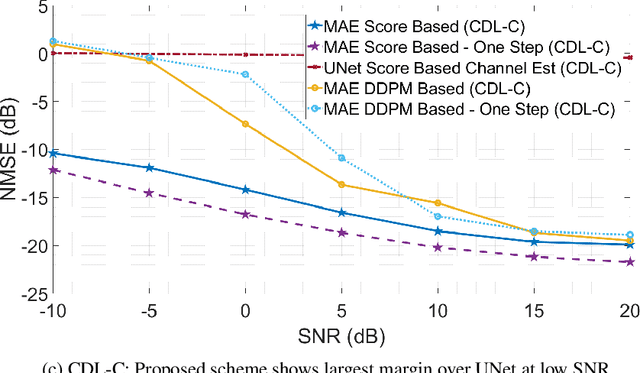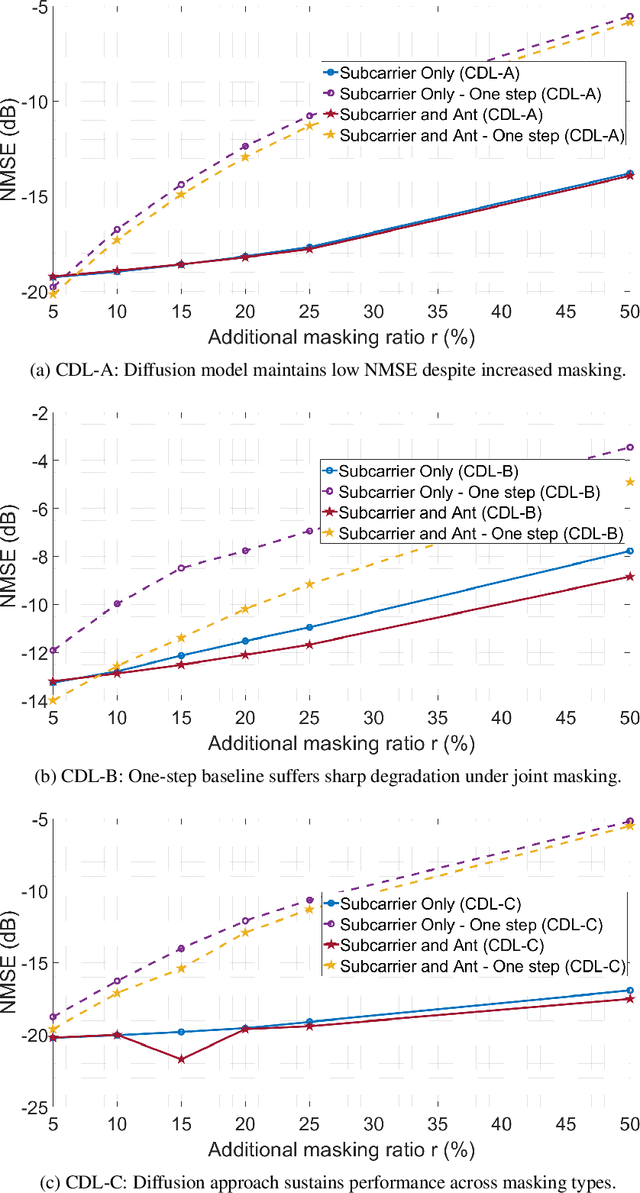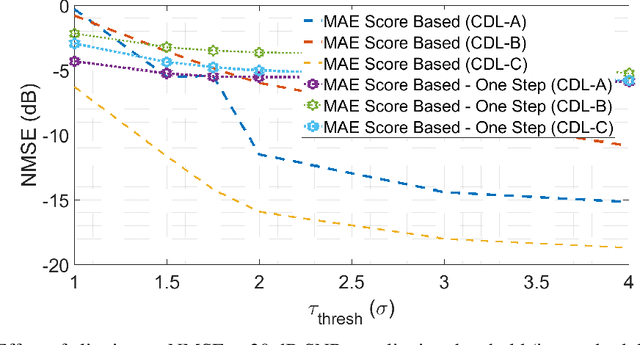Fan Zhang
University of Bristol
EssayCBM: Rubric-Aligned Concept Bottleneck Models for Transparent Essay Grading
Dec 23, 2025



Abstract:Understanding how automated grading systems evaluate essays remains a significant challenge for educators and students, especially when large language models function as black boxes. We introduce EssayCBM, a rubric-aligned framework that prioritizes interpretability in essay assessment. Instead of predicting grades directly from text, EssayCBM evaluates eight writing concepts, such as Thesis Clarity and Evidence Use, through dedicated prediction heads on an encoder. These concept scores form a transparent bottleneck, and a lightweight network computes the final grade using only concepts. Instructors can adjust concept predictions and instantly view the updated grade, enabling accountable human-in-the-loop evaluation. EssayCBM matches black-box performance while offering actionable, concept-level feedback through an intuitive web interface.
Cross-Population White Matter Atlas Creation for Concurrent Mapping of Brain Connections in Neonates and Adults with Diffusion MRI Tractography
Dec 23, 2025



Abstract:Comparing white matter (WM) connections between adults and neonates using diffusion MRI (dMRI) can advance our understanding of typical brain development and potential biomarkers for neurological disorders. However, existing WM atlases are population-specific (adult or neonatal) and reside in separate spaces, preventing direct cross-population comparisons. A unified WM atlas spanning both neonates and adults is still lacking. In this study, we propose a neonatal/adult brain atlas (NABA), a WM tractography atlas built from dMRI data of both neonates and adults. NABA is constructed using a robust, data-driven fiber clustering pipeline, enabling group-wise WM atlasing across populations despite substantial anatomical variability. The atlas provides a standardized template for WM parcellation, allowing direct comparison of WM tracts between neonates and adults. Using NABA, we conduct four analyses: (1) evaluating the feasibility of joint WM mapping across populations, (2) characterizing WM development across neonatal ages relative to adults, (3) assessing sex-related differences in neonatal WM development, and (4) examining the effects of preterm birth. Our results show that NABA robustly identifies WM tracts in both populations. We observe rapid fractional anisotropy (FA) development in long-range association tracts, including the arcuate fasciculus and superior longitudinal fasciculus II, whereas intra-cerebellar tracts develop more slowly. Neonatal females exhibit faster overall FA development than males. Although preterm neonates show lower overall FA development rates, they demonstrate relatively higher FA growth in specific tracts, including the corticospinal tract, corona radiata-pontine pathway, and intracerebellar tracts. These findings demonstrate that NABA is a useful tool for investigating WM development across neonates and adults.
NeuralOGCM: Differentiable Ocean Modeling with Learnable Physics
Dec 12, 2025Abstract:High-precision scientific simulation faces a long-standing trade-off between computational efficiency and physical fidelity. To address this challenge, we propose NeuralOGCM, an ocean modeling framework that fuses differentiable programming with deep learning. At the core of NeuralOGCM is a fully differentiable dynamical solver, which leverages physics knowledge as its core inductive bias. The learnable physics integration captures large-scale, deterministic physical evolution, and transforms key physical parameters (e.g., diffusion coefficients) into learnable parameters, enabling the model to autonomously optimize its physical core via end-to-end training. Concurrently, a deep neural network learns to correct for subgrid-scale processes and discretization errors not captured by the physics model. Both components work in synergy, with their outputs integrated by a unified ODE solver. Experiments demonstrate that NeuralOGCM maintains long-term stability and physical consistency, significantly outperforming traditional numerical models in speed and pure AI baselines in accuracy. Our work paves a new path for building fast, stable, and physically-plausible models for scientific computing.
Learning Robot Manipulation from Audio World Models
Dec 09, 2025Abstract:World models have demonstrated impressive performance on robotic learning tasks. Many such tasks inherently demand multimodal reasoning; for example, filling a bottle with water will lead to visual information alone being ambiguous or incomplete, thereby requiring reasoning over the temporal evolution of audio, accounting for its underlying physical properties and pitch patterns. In this paper, we propose a generative latent flow matching model to anticipate future audio observations, enabling the system to reason about long-term consequences when integrated into a robot policy. We demonstrate the superior capabilities of our system through two manipulation tasks that require perceiving in-the-wild audio or music signals, compared to methods without future lookahead. We further emphasize that successful robot action learning for these tasks relies not merely on multi-modal input, but critically on the accurate prediction of future audio states that embody intrinsic rhythmic patterns.
Effective Attention-Guided Multi-Scale Medical Network for Skin Lesion Segmentation
Dec 08, 2025Abstract:In the field of healthcare, precise skin lesion segmentation is crucial for the early detection and accurate diagnosis of skin diseases. Despite significant advances in deep learning for image processing, existing methods have yet to effectively address the challenges of irregular lesion shapes and low contrast. To address these issues, this paper proposes an innovative encoder-decoder network architecture based on multi-scale residual structures, capable of extracting rich feature information from different receptive fields to effectively identify lesion areas. By introducing a Multi-Resolution Multi-Channel Fusion (MRCF) module, our method captures cross-scale features, enhancing the clarity and accuracy of the extracted information. Furthermore, we propose a Cross-Mix Attention Module (CMAM), which redefines the attention scope and dynamically calculates weights across multiple contexts, thus improving the flexibility and depth of feature capture and enabling deeper exploration of subtle features. To overcome the information loss caused by skip connections in traditional U-Net, an External Attention Bridge (EAB) is introduced, facilitating the effective utilization of information in the decoder and compensating for the loss during upsampling. Extensive experimental evaluations on several skin lesion segmentation datasets demonstrate that the proposed model significantly outperforms existing transformer and convolutional neural network-based models, showcasing exceptional segmentation accuracy and robustness.
SMGeo: Cross-View Object Geo-Localization with Grid-Level Mixture-of-Experts
Nov 18, 2025



Abstract:Cross-view object Geo-localization aims to precisely pinpoint the same object across large-scale satellite imagery based on drone images. Due to significant differences in viewpoint and scale, coupled with complex background interference, traditional multi-stage "retrieval-matching" pipelines are prone to cumulative errors. To address this, we present SMGeo, a promptable end-to-end transformer-based model for object Geo-localization. This model supports click prompting and can output object Geo-localization in real time when prompted to allow for interactive use. The model employs a fully transformer-based architecture, utilizing a Swin-Transformer for joint feature encoding of both drone and satellite imagery and an anchor-free transformer detection head for coordinate regression. In order to better capture both inter-modal and intra-view dependencies, we introduce a grid-level sparse Mixture-of-Experts (GMoE) into the cross-view encoder, allowing it to adaptively activate specialized experts according to the content, scale and source of each grid. We also employ an anchor-free detection head for coordinate regression, directly predicting object locations via heat-map supervision in the reference images. This approach avoids scale bias and matching complexity introduced by predefined anchor boxes. On the drone-to-satellite task, SMGeo achieves leading performance in accuracy at IoU=0.25 and mIoU metrics (e.g., 87.51%, 62.50%, and 61.45% in the test set, respectively), significantly outperforming representative methods such as DetGeo (61.97%, 57.66%, and 54.05%, respectively). Ablation studies demonstrate complementary gains from shared encoding, query-guided fusion, and grid-level sparse mixture-of-experts.
SEMC: Structure-Enhanced Mixture-of-Experts Contrastive Learning for Ultrasound Standard Plane Recognition
Nov 16, 2025Abstract:Ultrasound standard plane recognition is essential for clinical tasks such as disease screening, organ evaluation, and biometric measurement. However, existing methods fail to effectively exploit shallow structural information and struggle to capture fine-grained semantic differences through contrastive samples generated by image augmentations, ultimately resulting in suboptimal recognition of both structural and discriminative details in ultrasound standard planes. To address these issues, we propose SEMC, a novel Structure-Enhanced Mixture-of-Experts Contrastive learning framework that combines structure-aware feature fusion with expert-guided contrastive learning. Specifically, we first introduce a novel Semantic-Structure Fusion Module (SSFM) to exploit multi-scale structural information and enhance the model's ability to perceive fine-grained structural details by effectively aligning shallow and deep features. Then, a novel Mixture-of-Experts Contrastive Recognition Module (MCRM) is designed to perform hierarchical contrastive learning and classification across multi-level features using a mixture-of-experts (MoE) mechanism, further improving class separability and recognition performance. More importantly, we also curate a large-scale and meticulously annotated liver ultrasound dataset containing six standard planes. Extensive experimental results on our in-house dataset and two public datasets demonstrate that SEMC outperforms recent state-of-the-art methods across various metrics.
GFix: Perceptually Enhanced Gaussian Splatting Video Compression
Nov 10, 2025



Abstract:3D Gaussian Splatting (3DGS) enhances 3D scene reconstruction through explicit representation and fast rendering, demonstrating potential benefits for various low-level vision tasks, including video compression. However, existing 3DGS-based video codecs generally exhibit more noticeable visual artifacts and relatively low compression ratios. In this paper, we specifically target the perceptual enhancement of 3DGS-based video compression, based on the assumption that artifacts from 3DGS rendering and quantization resemble noisy latents sampled during diffusion training. Building on this premise, we propose a content-adaptive framework, GFix, comprising a streamlined, single-step diffusion model that serves as an off-the-shelf neural enhancer. Moreover, to increase compression efficiency, We propose a modulated LoRA scheme that freezes the low-rank decompositions and modulates the intermediate hidden states, thereby achieving efficient adaptation of the diffusion backbone with highly compressible updates. Experimental results show that GFix delivers strong perceptual quality enhancement, outperforming GSVC with up to 72.1% BD-rate savings in LPIPS and 21.4% in FID.
GroupKAN: Rethinking Nonlinearity with Grouped Spline-based KAN Modeling for Efficient Medical Image Segmentation
Nov 07, 2025



Abstract:Medical image segmentation requires models that are accurate, lightweight, and interpretable. Convolutional architectures lack adaptive nonlinearity and transparent decision-making, whereas Transformer architectures are hindered by quadratic complexity and opaque attention mechanisms. U-KAN addresses these challenges using Kolmogorov-Arnold Networks, achieving higher accuracy than both convolutional and attention-based methods, fewer parameters than Transformer variants, and improved interpretability compared to conventional approaches. However, its O(C^2) complexity due to full-channel transformations limits its scalability as the number of channels increases. To overcome this, we introduce GroupKAN, a lightweight segmentation network that incorporates two novel, structured functional modules: (1) Grouped KAN Transform, which partitions channels into G groups for multivariate spline mappings, reducing complexity to O(C^2/G), and (2) Grouped KAN Activation, which applies shared spline-based mappings within each channel group for efficient, token-wise nonlinearity. Evaluated on three medical benchmarks (BUSI, GlaS, and CVC), GroupKAN achieves an average IoU of 79.80 percent, surpassing U-KAN by +1.11 percent while requiring only 47.6 percent of the parameters (3.02M vs 6.35M), and shows improved interpretability.
Robust Super-Capacity SRS Channel Inpainting via Diffusion Models
Oct 30, 2025



Abstract:Accurate channel state information (CSI) is essential for reliable multiuser MIMO operation. In 5G NR, reciprocity-based beamforming via uplink Sounding Reference Signals (SRS) face resource and coverage constraints, motivating sparse non-uniform SRS allocation. Prior masked-autoencoder (MAE) approaches improve coverage but overfit to training masks and degrade under unseen distortions (e.g., additional masking, interference, clipping, non-Gaussian noise). We propose a diffusion-based channel inpainting framework that integrates system-model knowledge at inference via a likelihood-gradient term, enabling a single trained model to adapt across mismatched conditions. On standardized CDL channels, the score-based diffusion variant consistently outperforms a UNet score-model baseline and the one-step MAE under distribution shift, with improvements up to 14 dB NMSE in challenging settings (e.g., Laplace noise, user interference), while retaining competitive accuracy under matched conditions. These results demonstrate that diffusion-guided inpainting is a robust and generalizable approach for super-capacity SRS design in 5G NR systems.
 Add to Chrome
Add to Chrome Add to Firefox
Add to Firefox Add to Edge
Add to Edge